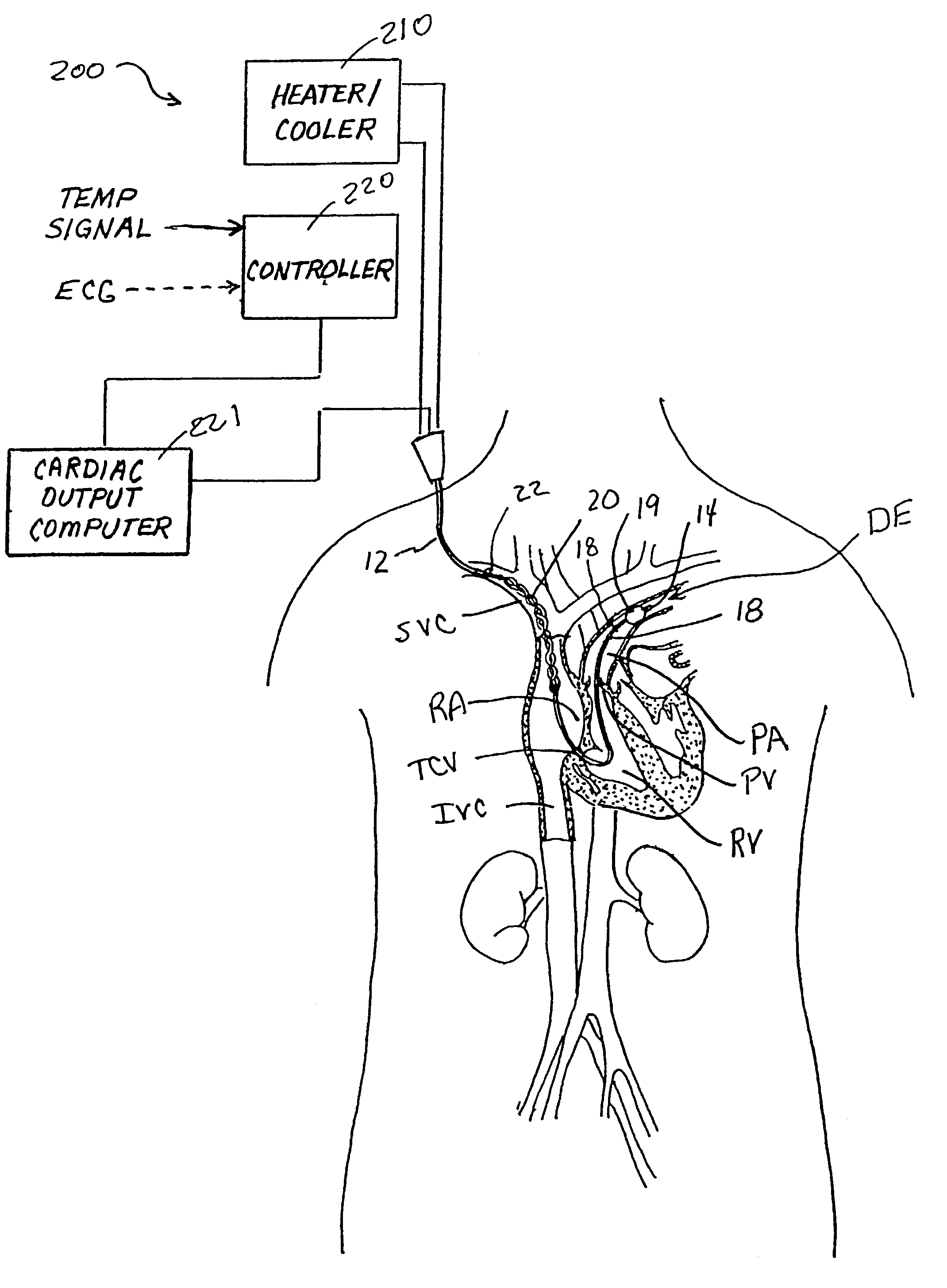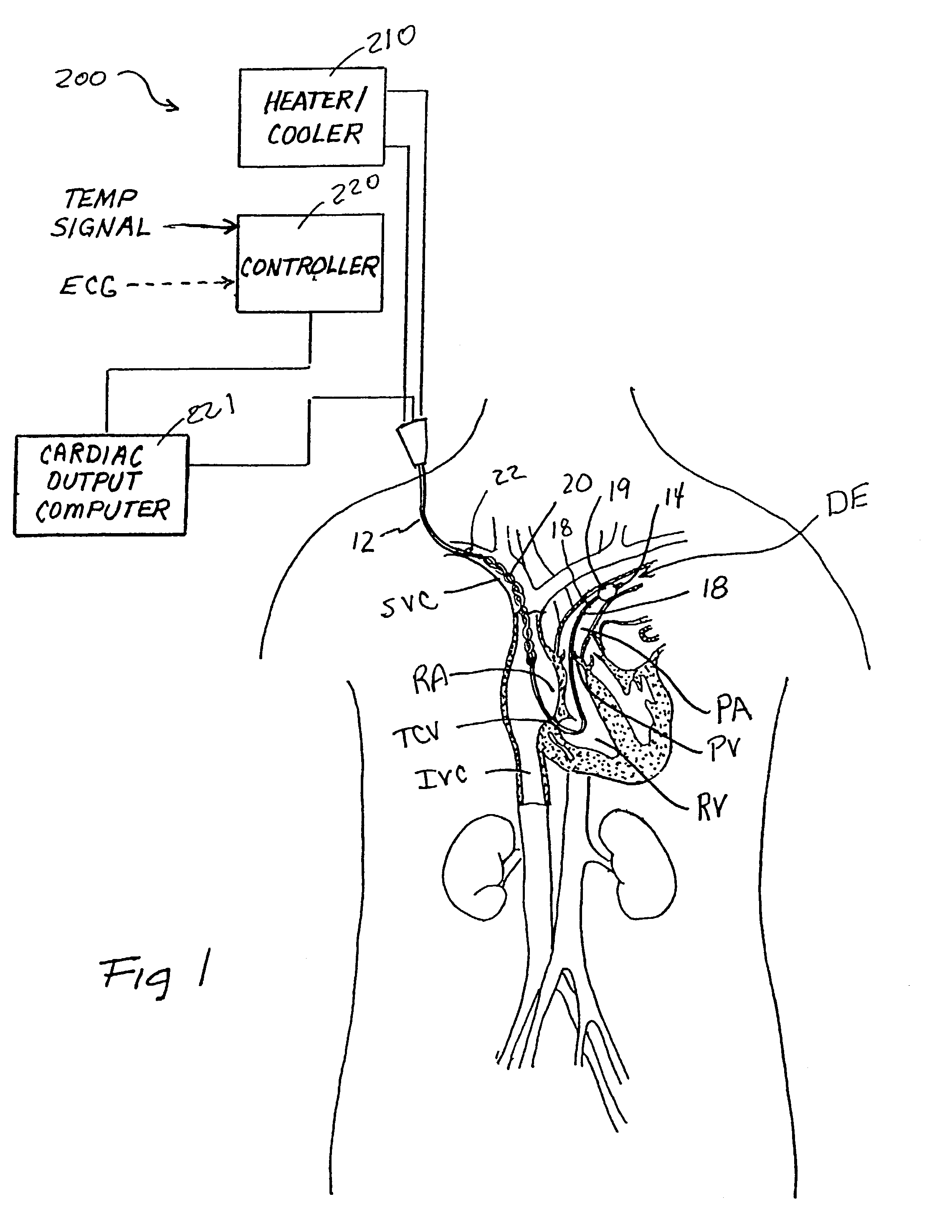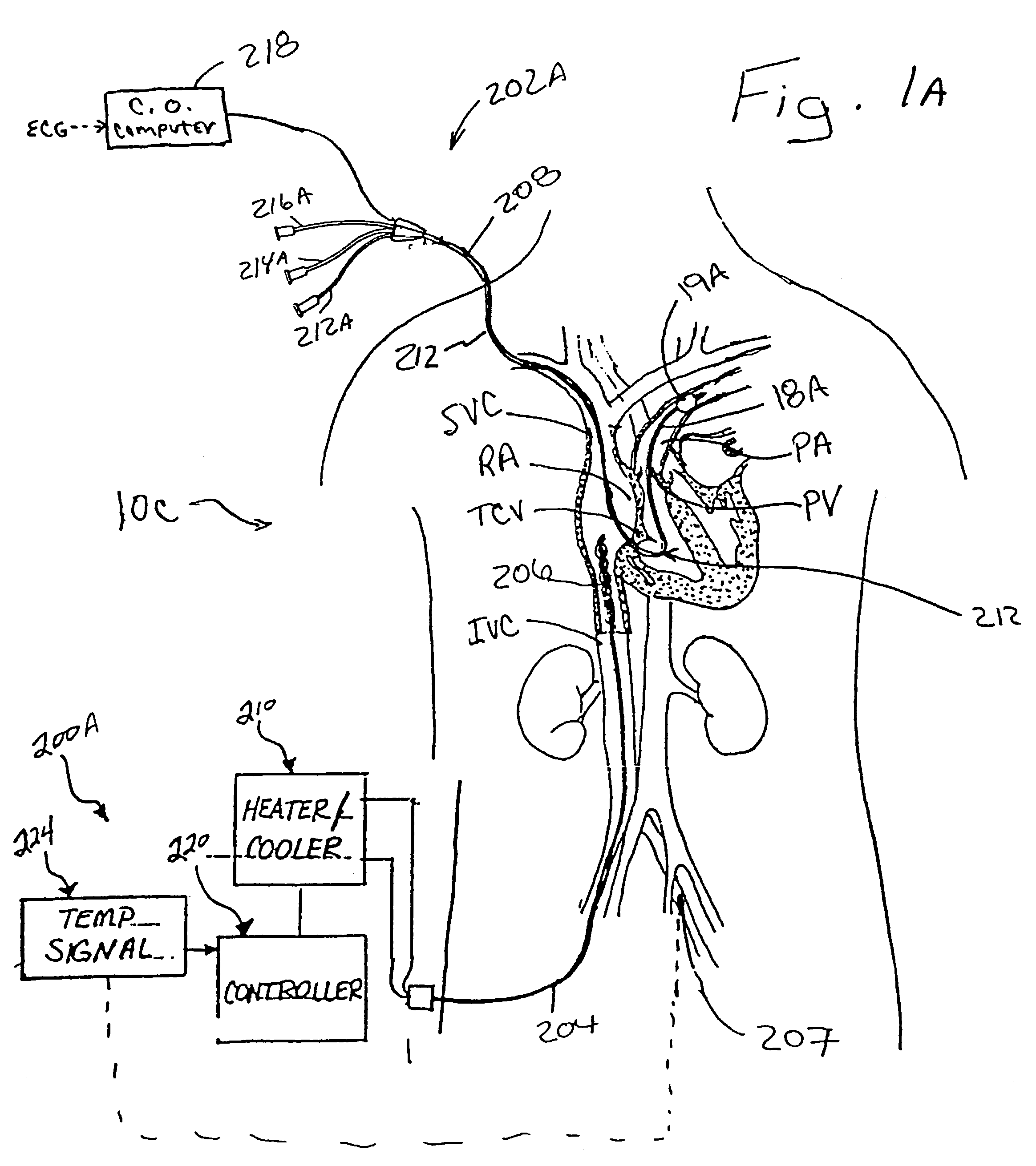Devices and methods for measuring blood flow rate or cardiac output and for heating or cooling the body
a technology of flow rate and cardiac output, which is applied in the field of medical treatment, can solve problems such as inability to measure the flow rate of blood or cardiac output, problems such as inability to measure the error in cardiac output, and inability to achieve the effect of reducing the risk of cardiac output, and reducing the efficiency of cardiac output measuremen
- Summary
- Abstract
- Description
- Claims
- Application Information
AI Technical Summary
Benefits of technology
Problems solved by technology
Method used
Image
Examples
example 1
A Single Catheter System used for Endovascular Induction / Maintenance of Hypothermia and Periodic Cardiac Output / Right Heart Pressure Determinations
[0048]A human patient suffering from a myocardial infarction is admitted to a critical unit of a hospital. A heat exchanger-equipped pulmonary artery catheter 10 of the type described above and shown in FIGS. 1 and 2–2c is percutaneously inserted into the patient's right subclavian vein using a Seidinger technique. Optionally, a guidewire may be advanced into the patient's superior vena cava and the proximal end of that guidewire is inserted into the distal port 14 of the catheter and through the guidewire / pulmonary artery lumen 32. The catheter body 12 is then advanced over the guidewire to a first position where its distal end DE is positioned within or immediately adjacent to the patient's right atrium RA. The guidewire, if used, is removed. The guidewire / pulmonary artery lumen 32 is filled with saline solution or other suitable fluid ...
example 2
Determination of CO by Rate of Heat Exchange
[0056]It is possible to make a determination of blood flow in a vessel and thus indirectly CO without the need to measure the temperature of the blood before the heat exchange and after the heat exchange. For a given heat exchange region located in a blood stream, directly proportional to the blood flow across the heat exchange region. Thus if the heat exchange increases and all other factors stay the same, that indicates that the blood flow has increased. The same, of course, holds true if the heat exchange decreases; that indicates that the blood flow has decreased. This phenomenon allows one to determine the blood flow if the heat exchange region is adequately characterized and the amount of heat exchanged in a given length of time is known. As has been previously described, in a heat exchange catheter as illustrated in FIG. 1 or 1A, where the amount of heat exchanged with the blood can be determined by measuring the rate of flow of the...
PUM
 Login to View More
Login to View More Abstract
Description
Claims
Application Information
 Login to View More
Login to View More - R&D
- Intellectual Property
- Life Sciences
- Materials
- Tech Scout
- Unparalleled Data Quality
- Higher Quality Content
- 60% Fewer Hallucinations
Browse by: Latest US Patents, China's latest patents, Technical Efficacy Thesaurus, Application Domain, Technology Topic, Popular Technical Reports.
© 2025 PatSnap. All rights reserved.Legal|Privacy policy|Modern Slavery Act Transparency Statement|Sitemap|About US| Contact US: help@patsnap.com



